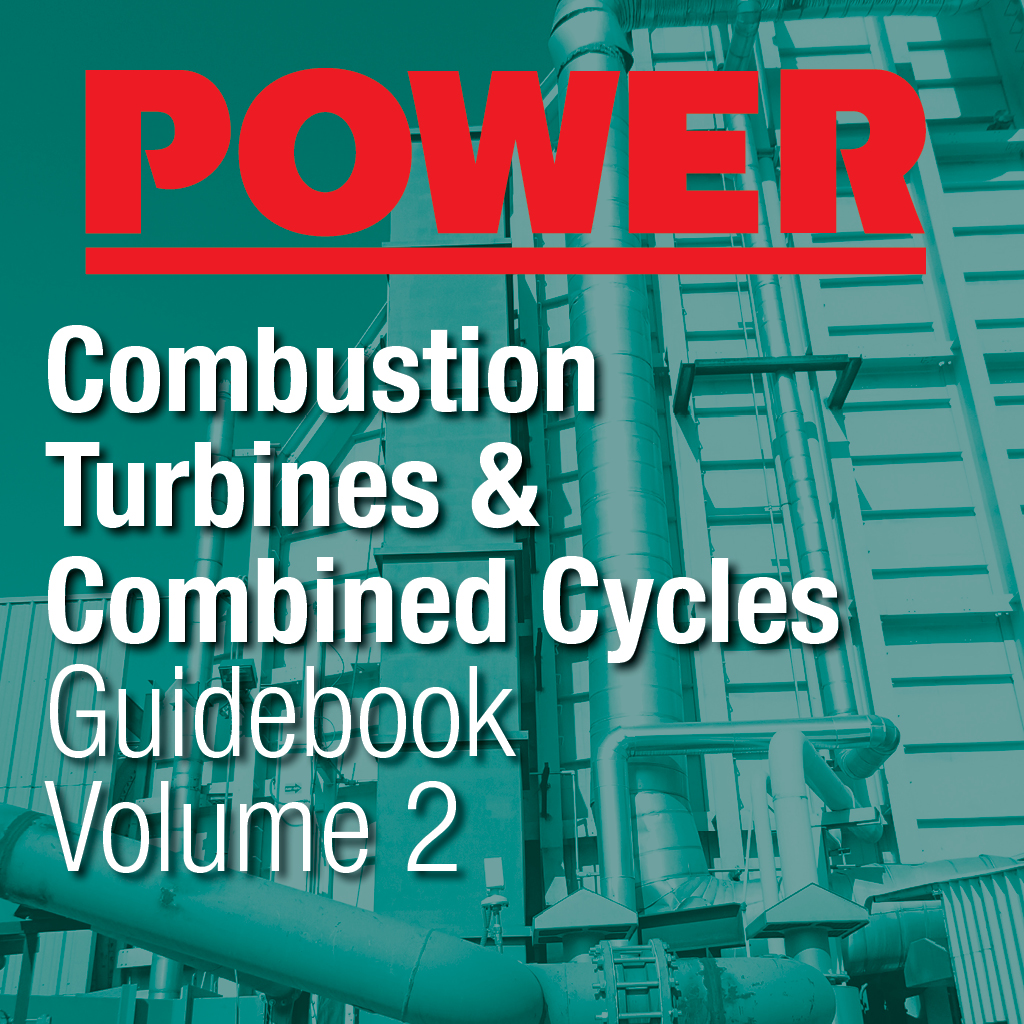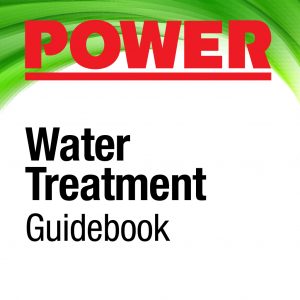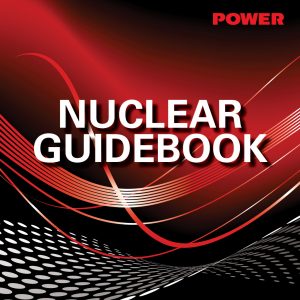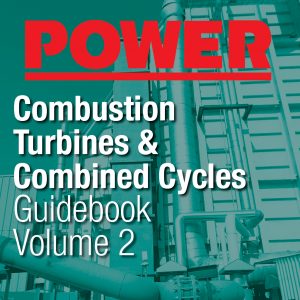Description
This updated guidebook exclusively features combustion turbines and combined cycle articles, including full charts, photographs, graphs and step-by-step instructions, previously featured in POWER magazine.
Delivered in a PDF format. 88 pages.
Table of Contents:
Tuning Ammonia Flow to Optimize SCR Performance
The selective catalytic reduction system has become ubiquitous throughout the world of power plants. Emission control requirements are ever-more stringent, and the cost of excursions is becoming increasingly high. The key to staying under the regulators’ radar is precisely controlling the ammonia injected into the boiler. A new control strategy does precisely that.
Economic Operation of Fast-Starting HRSGs
Fast-starting combined-cycle plants are designed for a certain operating life based on a customer-specified set of operating scenarios. During that design phase, periodic inspection and maintenance procedures to benchmark equipment actual wear and tear should be developed, but seldom are. Without an accurate assessment of remaining equipment life for components subjected to fast and frequent start-ups and shutdowns, the real operation and maintenance cost is only a guess.
Improving SCR Performance on Simple-Cycle Combustion Turbines
Austin Energy replaced the selective catalytic reduction (SCR) catalyst twice over five years for its four peaker turbines. The duct modifications and injection grid redesign, combined with new catalyst, are producing high NOx reduction and low ammonia slip, and the catalyst is now expected to last at least five years.
Flexible Turbine Operation Is Vital for a Robust Grid
Renewable electricity generation has many environmental advantages, but adding large amounts of far-flung renewable resources to a grid requires increased operating flexibility from dispatchable generators when the wind doesn’t blow or the sun doesn’t shine. One promising option: A combined cycle plant based on Alstom’s GT24/GT26 combustion turbine can be “parked” at approximately 20% plant load while producing emissions comparable to those during baseload operation—with little loss in thermal efficiency. When demand returns, the combined cycle can return to baseload within minutes.
Selecting Your Next Combustion Turbine
With natural gas serving as the fuel de jour, many utilities and merchant generators will be considering the purchase of new combustion turbines in the near future. If you are in the market for a gas turbine, here are some key design features you should discuss with turbine vendors prior to your next purchase.
The T-Point Plant: The Ultimate Validation Test
Fourteen years ago, the MHI T-Point demonstration combined-cycle plant in Takasago, Japan, changed the way modern gas turbines are validated under real operating conditions. In February, T-Point marked yet another milestone by starting to validate the world’s largest and highest efficiency gas turbine, which operates at the unprecedented turbine inlet temperature of 1,600C.
K-Power Upgrades Combined- Cycle Automatic Generation Controls
Tightly managed grids require combined-cycle plants equipped with power block controls that can quickly respond to automatic generation control signals with minimal error. K-Power’s successful controls upgrade demonstrates that that goal—and more—is achievable.
Real-Time Monitoring of Natural Gas Fuel Cleanliness
Gas turbines require clean gas to operate efficiently. Particulate contamination fouls fuel nozzles, causes increases in flue stack emissions, and occasionally causes unplanned plant outages. Now a new real-time natural gas cleanliness monitoring and web-based alarm system is providing valuable protection for natural gas–fired power plants. The adaptation of laser light–scattering technology for the purpose of contaminant measurement in high-pressure gaseous pipelines provides a method of monitoring liquid and solid contamination levels.
Microturbine Technology Matures
Microturbine technology has evolved from early systems of 30 kW to 70 kW to today’s systems, which can have individual ratings of 200 kW to 250 kW. Packages up to 1 MW are now available that can be assembled into multipac units for projects of 5 MW to 10 MW. These modern units are packaged with integrated digital protection, synchronization, and controls; they produce high combined heat and power efficiencies; and they are capable of using multiple fuels.
Are Simple Cycles or Combined Cycles Better for Renewable Power Integration?
It’s been called “filling the duck pond,” and it’s the increasingly common challenge worldwide of balancing supply and demand when variable renewables are not feeding power to the grid. Gas-fired generation is often filling the pond, but the technology mix matters.
Are Flexible Generation Plants Performing as Expected?
Highly flexible, fast-ramping, fast-cycling combined cycle plants hit the market with a big splash a few years ago. But are they performing as advertised? Though the few operational plants are still new and still learning, the initial results are encouraging.
Protecting Steam Cycle Components During Low-Load Operation of Combined Cycle Gas Turbine Plants
How low can you go? That’s the question owners of gas turbine combined cycle plants are asking these days as they are being called upon to operate those units for rapid response in markets where load following is becoming the norm. The resulting cyclic operation introduces challenges that can result in damage to steam cycle components if you aren’t careful.
SCR Reheat Burners Keep NOx in Spec at Low Loads
Optimal NOx removal by a selective catalytic reduction (SCR) system requires the inlet gas temperature to remain within a prescribed range. How does a baseload unit meet NOx permit limits when it’s cycled and SCR inlet gas temperatures dip?
Prepare Your Gas Plant for Cold Weather Operations
Cold weather operations are challenging for plant designers and operators alike, particularly where severe winter weather is rare. However, another cold winter is expected, so now is the time to review the lessons learned by many plants after the February 2011 Southwest freeze.
Rapid Cycling: The Human Factor
Strategies for Inspecting HRSGs in Two-Shift and Low-Load Service
Inspections of more than 500 units over the past 10 years reveals common challenges faced by mid-life HRSGs, particularly those used in combined cycle plants to offset renewable generation and other aggressive operating strategies.
Managing the Changing Profile of a Combined Cycle Plant
Whether it’s market forces or other factors leading to a change in operating mode, going from baseload to flexible operation places substantial new stresses on a plant and its staff. Knowing what you’re getting into is key to successfully managing the transition.
Considerations When Upgrading Gas Turbine HMIs
Recent Innovations from Gas Turbine and HRSG OEMs
Demand for natural gas–fired power plants is perhaps more intense than it’s ever been. That means a big market to serve, and new opportunities for innovation. The major manufacturers are all working hard to stay ahead of the curve.
Steam Turbine Cleaning Using Chemical Foams
Quickly Boost Your Combustion Turbine Response
Morris Cogeneration, a combined cycle cogeneration plant near Chicago, has installed TurboPHASE, a fast-responding, modular “turbocharger” installed to boost capacity and PJM regulation revenue. How does it perform?
Replacing Multiple Turbine and BOP Control Systems with a Single Platform
Think Water When Designing CSP Plants
The operation of solar thermal power plants differs substantially from that of fossilfired plants, as the sun determines the generation rather than market demand. However, design of the power island to minimize water usage is very similar to that of a fossil plant. This renewable technology requires renewed thinking of its water systems’ design.
Reliable Fire Protection for Turbine Rooms





